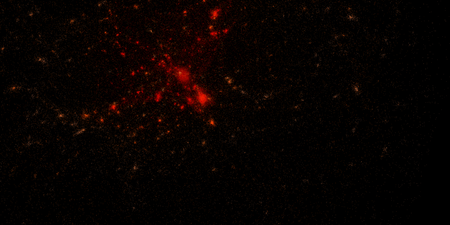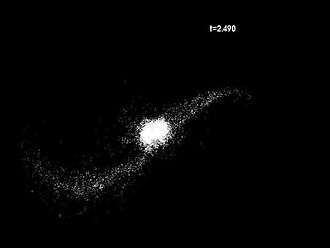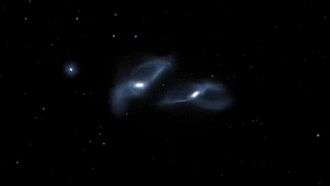Cosmological simulations

Computer simulations are a powerful and important tool for understanding the cosmos. A detailed simulation can provide a means for understanding processes which occur on such long time scales (millions or even billions of years) that it is not possible to to observe these events in the universe. Cosmological simulations are used to study galaxy collisions and also the formation of large scale structure in the universe. The introductory lesson below assumes no prior background in astronomy. The advanced lesson requires experience in building computer programs from source code.
Introductory
Advanced

- Starscream: A GPL code for galactic astronomy - Used to generate initial conditions to use with GADGET for galaxy collision simulations.
- GADGET-2: A code for cosmological simulations of structure formation - Simulation code for galaxy collisions or for early structure formation in the universe.
- G2X: GADGET2 Optimization Using the CUDA Architecture - Version of GADGET-2 for w:GPU hardware.
- IFrIT: A general purpose visualization software - For viewing the results of simulations.
See also


This course has been tentatively selected for improvement using an experimental EduV page.
Course credit will be given to certain students currently enrolled at Wright State University Lake Campus. Please join us even if you are not a student at WSU-Lake.
References
- Kaufmann, William J.; Smarr, Larry L., Supercomputing and the Transformation of Science, Scientific American Library (published 1993), ISBN 9780716750383
- Winsberg, Eric; Edward N. Zalta (ed.) (Summer 2015). "Computer Simulations in Science". The Stanford Encyclopedia of Philosophy. Center for the Study of Language and Information (CSLI), Stanford University. Retrieved 2015-12-27.
- Winsberg, Eric (October 15, 2010), Science in the Age of Computer Simulation, University Of Chicago Press, ISBN 0226902021